
How to Use 3S 10A Li-ion 18650 Charger Protection Board Module: Examples, Pinouts, and Specs
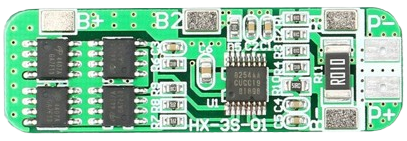
 Design with 3S 10A Li-ion 18650 Charger Protection Board Module in Cirkit Designer
Design with 3S 10A Li-ion 18650 Charger Protection Board Module in Cirkit DesignerIntroduction
The 3S 10A Li-ion 18650 Charger Protection Board Module is an essential component for managing the charging and protection of 3-series (3S) lithium-ion batteries. It is designed to work with 18650 cells, which are commonly used in high-capacity battery packs for portable electronics, power tools, and electric vehicles. The module ensures safe charging by preventing overcharge, over-discharge, and short-circuit conditions, thereby extending the life of the battery pack.
Explore Projects Built with 3S 10A Li-ion 18650 Charger Protection Board Module
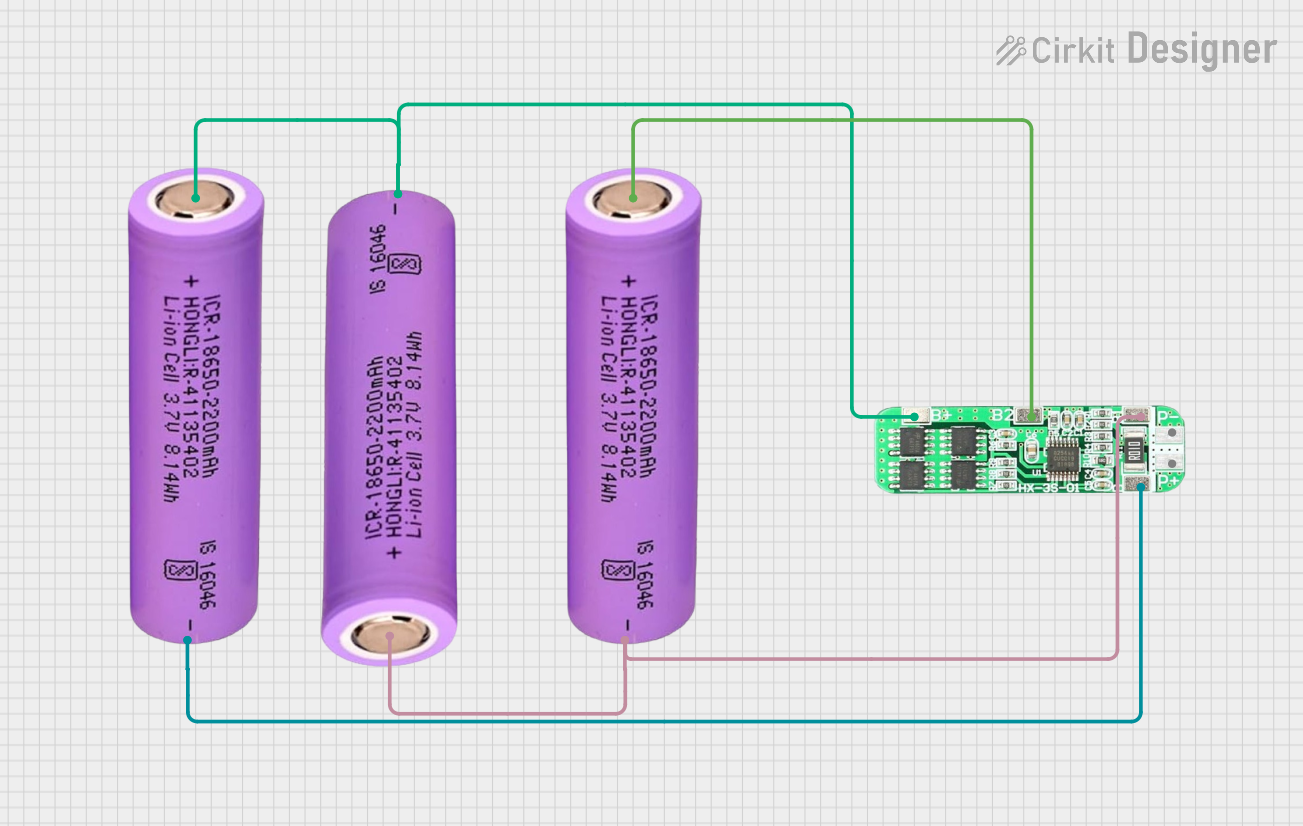
 Open Project in Cirkit Designer
Open Project in Cirkit Designer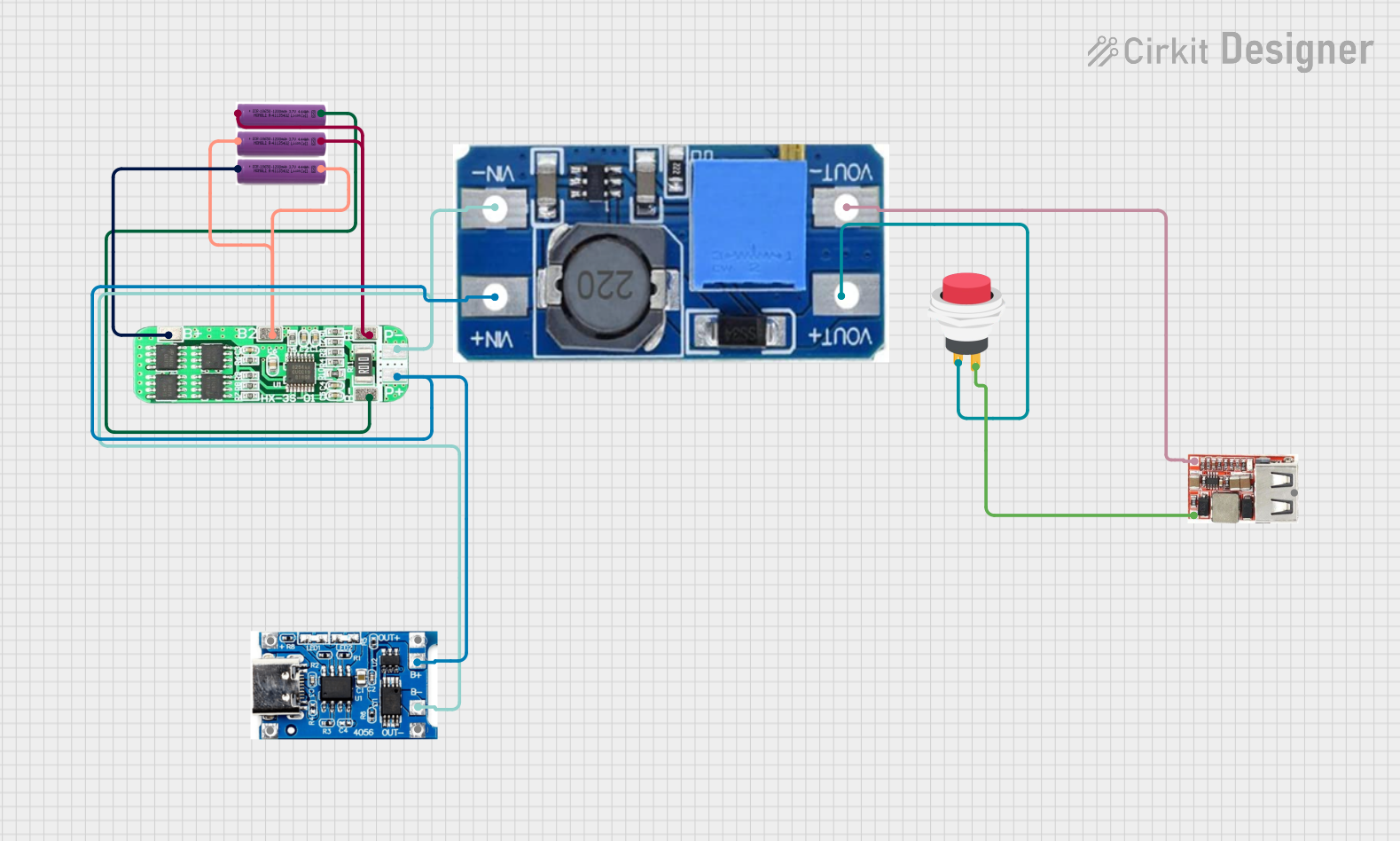
 Open Project in Cirkit Designer
Open Project in Cirkit Designer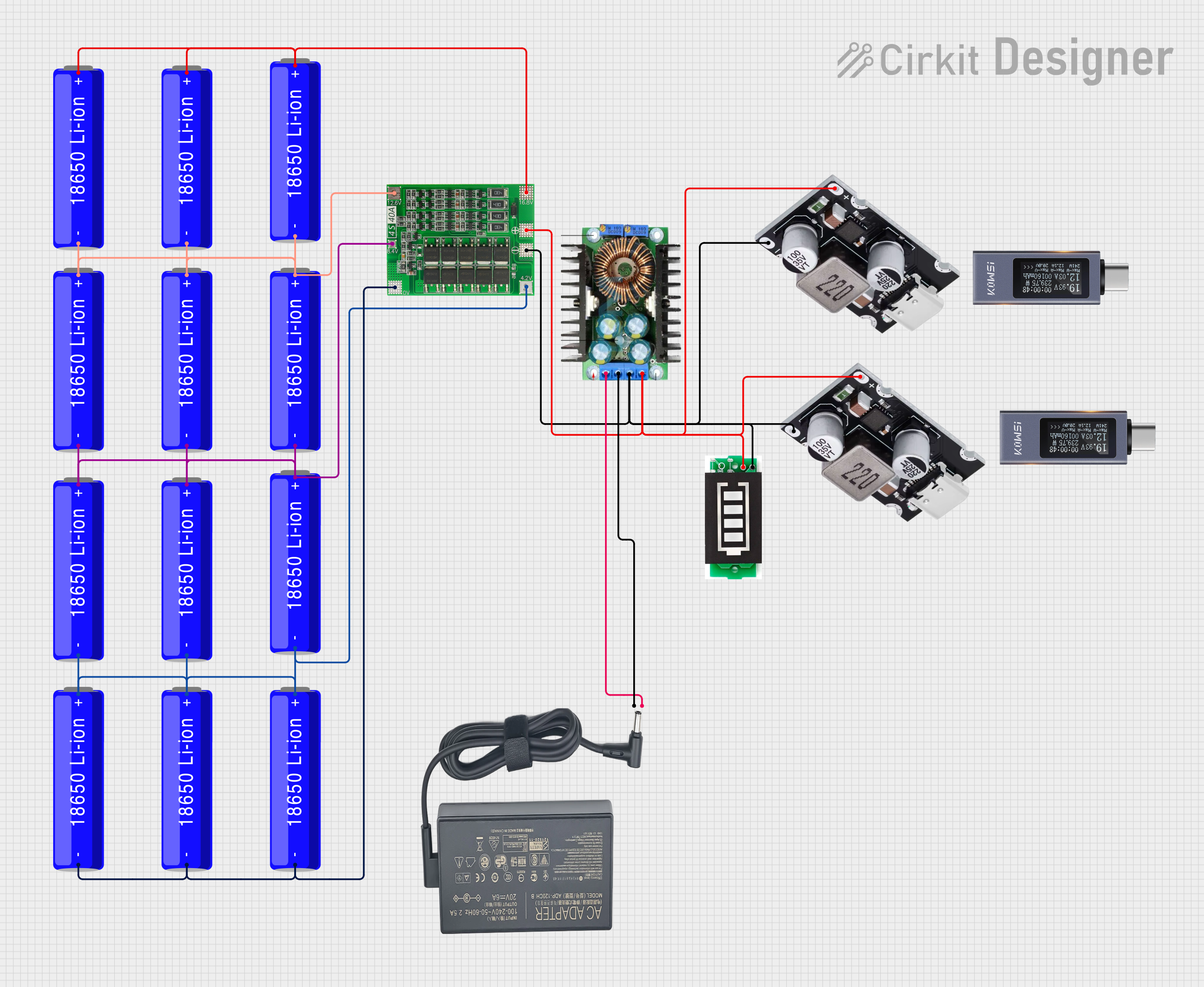
 Open Project in Cirkit Designer
Open Project in Cirkit Designer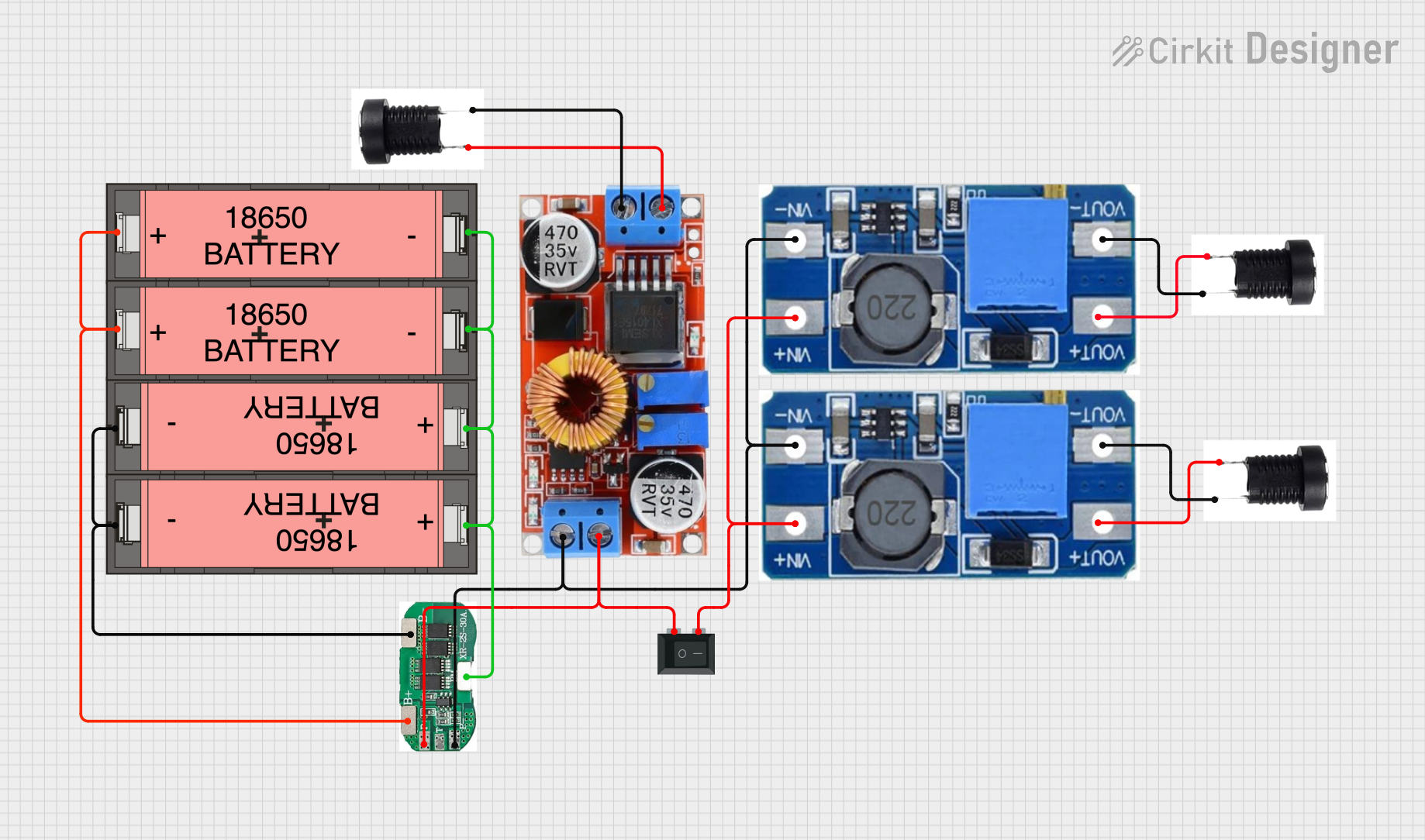
 Open Project in Cirkit Designer
Open Project in Cirkit DesignerExplore Projects Built with 3S 10A Li-ion 18650 Charger Protection Board Module

 Open Project in Cirkit Designer
Open Project in Cirkit Designer
 Open Project in Cirkit Designer
Open Project in Cirkit Designer
 Open Project in Cirkit Designer
Open Project in Cirkit Designer
 Open Project in Cirkit Designer
Open Project in Cirkit DesignerCommon Applications and Use Cases
- DIY Power Banks
- Portable Solar Chargers
- Electric Bicycles and Scooters
- Uninterruptible Power Supplies (UPS)
- Custom Lithium-ion Battery Packs
Technical Specifications
Key Technical Details
- Charging Voltage: 12.6V (4.2V per cell)
- Overcharge Voltage Range: 4.25-4.35V±0.05V (per cell)
- Over-discharge Voltage Range: 2.3-3.0V±0.05V (per cell)
- Maximum Operating Current: 10A
- Maximum Peak Current: 20A
- Operating Temperature: -40°C to +50°C
Pin Configuration and Descriptions
| Pin Number | Description | Notes |
|---|---|---|
| B+ | Battery Positive | Connect to battery positive terminal |
| B- | Battery Negative | Connect to battery negative terminal |
| P+ | Output/Charge Positive | Connect to load or charger positive |
| P- | Output/Charge Negative | Connect to load or charger negative |
| MB | Middle Battery Connection | Connect to the positive terminal of the second battery in series |
| CB | Cell Balance Pin | Used for cell balancing during charging |
Usage Instructions
How to Use the Component in a Circuit
Battery Connection:
- Connect the positive terminal of the first battery to the B+ pad on the board.
- Connect the negative terminal of the last battery in the series to the B- pad.
- Use the MB pad to connect the positive terminal of the second battery.
Load/Charger Connection:
- Connect the positive wire of the load or charger to the P+ pad.
- Connect the negative wire of the load or charger to the P- pad.
Charging:
- Use a charger that matches the charging voltage (12.6V for a 3S pack).
- Ensure the charger's current does not exceed the module's maximum charging current.
Important Considerations and Best Practices
- Always double-check connections before powering the circuit to prevent any short circuits.
- Do not exceed the recommended voltage and current ratings.
- Ensure proper ventilation around the module during operation.
- Use high-quality 18650 cells with similar capacities to ensure balanced charging and discharging.
- It is recommended to add a fuse between the charger and the P+ pad for additional safety.
Troubleshooting and FAQs
Common Issues Users Might Face
Battery Not Charging:
- Check if the connections to B+, B-, P+, and P- are correct and secure.
- Ensure the charger is functioning and providing the correct voltage.
Module Overheating:
- Reduce the load if the current draw is near the maximum rating.
- Check for any shorts in the wiring or on the battery terminals.
Uneven Battery Charging:
- Verify that all cells are healthy and have similar capacities.
- Check the connections to the MB pad for proper balance charging.
Solutions and Tips for Troubleshooting
- If the batteries are not charging, verify that the protection circuit has not been triggered by an overcharge or over-discharge condition.
- In case of module overheating, disconnect the load immediately and allow the module to cool down before investigating the cause.
- For uneven battery charging, consider replacing the cells with new ones that have matched capacities and states of charge.
FAQs
Q: Can I use this module with batteries other than 18650? A: Yes, as long as they are lithium-ion cells arranged in a 3S configuration and the voltage and current requirements are within the module's specifications.
Q: What should I do if the protection circuit is triggered? A: Disconnect the batteries and check for any issues. Once resolved, reconnect the batteries; the protection circuit should reset automatically.
Q: Can this module be used for discharging as well? A: Yes, the module provides protection during both charging and discharging of the battery pack.
Q: Is cell balancing necessary? A: Yes, cell balancing is crucial for the longevity and performance of the battery pack. This module includes a cell balancing function.
Q: How can I ensure the safety of my battery pack with this module? A: Follow the usage instructions carefully, do not exceed the specified ratings, and regularly inspect your battery pack for any signs of damage or wear.
This documentation provides a comprehensive guide to using the 3S 10A Li-ion 18650 Charger Protection Board Module. For further assistance or technical support, please contact the manufacturer or a professional electronics technician.